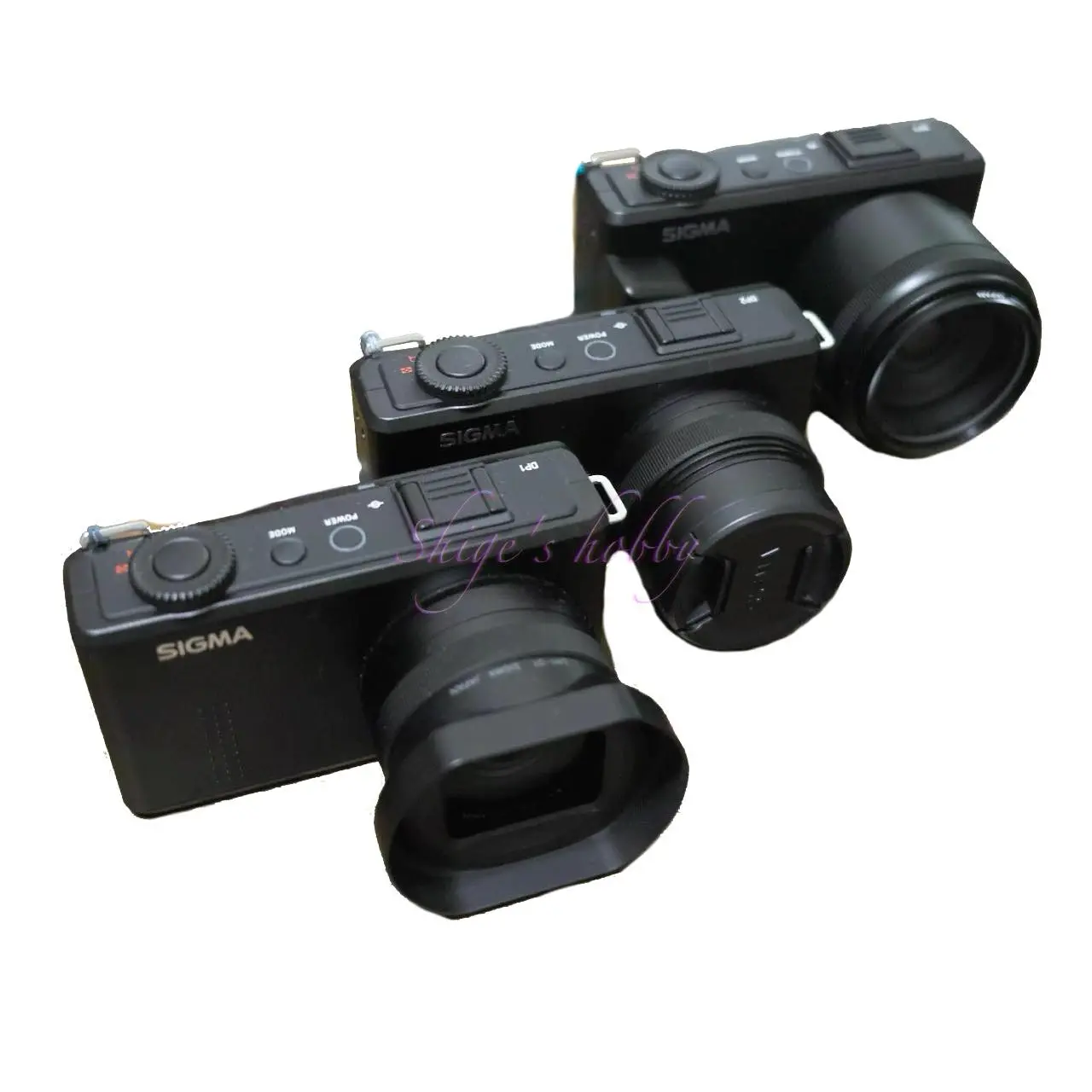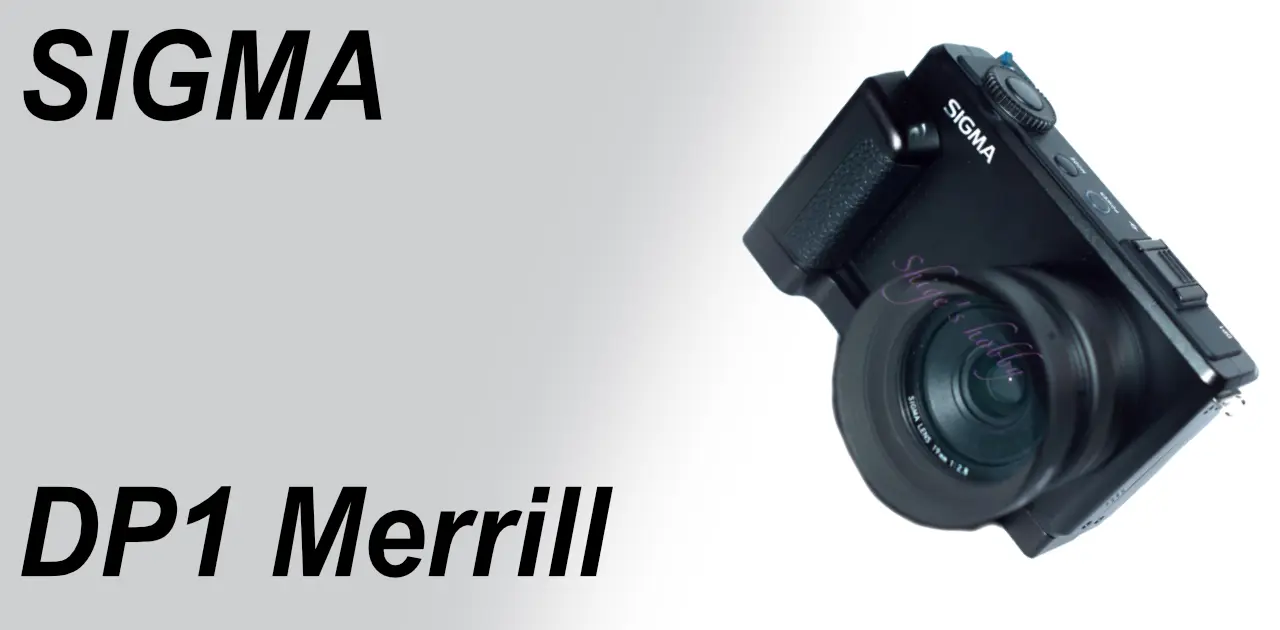Last updated on 2025-10-26
A review and Photo example of the SIGMA DP1 Merrill.
Gallery
Review


1.Overview
The DP1 Merrill is the successor to the DP1 series, and was released in 2012. The lens is a newly developed lens with an actual focal length of 19mm, and the sensor size is 1.5 times the APS-C sensor, which gives a focal length of 28.5mm in 35mm format.
The following contains some of the same information for the DP1 Merrill, DP2 Merrill, and DP3 Merrill.
This camera has been on the market for over 10 years, so it is considered an old compact digital camera.
The sensor, which is the heart of a digital camera, is a third-generation Foveon sensor with the same APS-C size as the SD1 SLR camera, and has a resolution of 15 million pixels x 3 layers. For raw images in X3F format, a file of about 50MB is generated. Since the file size of raw data for 100 million pixels of X2D is 200MB, it is considered to have 1500*3=45 million pixels of data. In 2012, a data volume of about 50 million pixels was achieved, so it seems that the slow file writing after shooting and heavy PC processing were inevitable at the time.
The battery is Sigma model number BP-41, and is compatible with the DB-65 used in Ricoh GR series compact cameras. In addition, Fujifilm, Leica, and Panasonic also use the same shape, so it is good that it is not difficult to obtain compatible batteries.
The minimum shooting distance of the DP1 Merrill is 20 cm, which is 10 times the actual focal length of 19 mm, and is the minimum shooting distance in accordance with the design method of general lenses. This lens is an excellent wide-angle lens with little distortion, so you can safely shoot buildings and other objects.
The DP Merrill series has three models with different focal lengths: the DP1 Merrill equivalent to 28 mm in 35 mm format, the DP2 Merrill equivalent to 45 mm, and the DP3 Merrill equivalent to 75 mm. All camera bodies have a square shape with few bumps and grooves, which makes them a little difficult to hold when not in use, but this can be improved by attaching a third-party grip. The dimensions of all three cameras are the same except for the lens, so options such as grips can be reused. The DP1 Merrill and DP2 Merrill also have almost the same lens size, with the only differences being the lens nameplate and the model number on the top right of the body.
The DP Merrill series only supports X3F for image recording, so image processing is only possible with SIGMA PHOTO PRO (hereinafter referred to as SPP).
2.Usability
I decided to buy the DP1 Merrill for a rather impure reason. From February to June 2013, Sigma ran a campaign offering cashbacks on purchases of the DP series, so I bought a bunch of them to take advantage of that. It feels plastic and cheap and voidy in the hand, but the compact body is equipped with a high-performance APS-C sensor, and the focal length of 28mm in 35mm equivalent should make it a good choice for wide-angle snapshot photography, but unfortunately the method of fixing the focus position is troublesome and it is not very suitable for snapshots.
In particular, the first step in frustration is that you cannot do tricks like old manual focus lenses, such as aligning the distance indicator and taking a picture, and it is also difficult that there is no function to fix the focus at a certain distance like other companies’ cameras.
Nevertheless, for users who want to fix the focus position with this camera, please refer to the following website, which introduces how to fix the focus position by switching between AF/MF.
http://maros-notebook.txt-nifty.com/notebook/2012/08/dp2-merrill-2-2.html
Unfortunately, the DP1 Merrill inherits the tradition of Sigma compact digital cameras, and has the disadvantages of poor electrical system, poor battery life, and poor response due to poor processing system, which are also reasons why I think it is not suitable for snapshots.
It is a camera that is sensitive to camera shake, so it is reasonable to say that it is out of the question to use it for snapshots, but it is up to the photographer to think about how to use the tool they have in their hands.
When this camera was released, I was using the LEICA M9 as my main camera, so I used the M9 exclusively for wide-angle shooting including 28mm, and I did not put much effort into using this camera, which has a similar focal length, so my impression of the camera is very weak.
As of 2024, used DP1 Merrills are traded at a fairly high price.
Considering the difficulty of handling the X3F, the battery life, and the fact that Sigma has ended repair support as of 2024, I don’t feel like buying one at a high price.
To replace this camera, it would be a reasonable choice to buy the dp1 Quattro, which is DNG compatible and repairable as of 2024, and has a Foveon sensor. However, the dp1 Quattro’s tonfa body has a visual impact, but its poor portability is unavoidable, so only photographers who can sacrifice portability can choose it.
It is a real shame that a camera with a Quattro sensor using the DP1 Merrill body was not released. Since the sensor size of the DP1 Merrill changed from the DP1 series, it is understandable that the body became larger, but the change in shape from the DP1 Merrill to the DP1 Quattro is difficult to understand.
Sigma’s spirit of always trying to create something new is admirable. However, Ricoh’s approach of keeping the concept while brushing up the content is also an option, so I would like them to use this approach wisely.
3.Summary
In conclusion, to sum up the DP1 Merrill, it is a monster-class integrated lens camera equipped with a Foveon image sensor that has 45 million pixels of data, the same as the SIGMA SD1.
However, the digital component technology is not at a level to fully utilize this image sensor, the processing speed of the entire camera is slow, the autofocus speed is insufficient, the accuracy is insufficient, and the battery life is short, so the potential as a camera is low.
As a result, shooting requires considerable patience and you have to fight against camera shake. It is a camera that requires constant tension and concentration, and if you just take it out of your bag and casually shoot with one hand, the results will be terrible.
・Additional information: X3F file
X3F files store information on the three colors R, G, and B for each pixel, so the amount of data is three times that of a normal Bayer sensor.
I have been using SIGMA PHOTO PRO (hereinafter referred to as SPP), which processes X3F, since the SD9 era, but I complained that it was unstable and slow. However, when I used it on a Mac mini equipped with an M2 Pro in 2024, I hardly saw any accidental crashes of SPP, and I realized that the image processing speed had reached a practically sufficient speed. It was an event that made me feel the benefit of the improved processing speed due to the increased CPU power of the PC.
I also tried using a freeware utility software that converts X3F to DNG, but in the version I used, it was difficult to achieve the same quality as SPP unless the image after DNG conversion was processed quite a bit, and I had the impression that it was difficult to master. It is unclear whether it has been improved since then.
If the image after DNG conversion can be obtained as equivalent to the SPP default, the ideal workflow for users who are accustomed to other software would be to fine-tune it with other software, but it was not so easy. The conversion software is freeware created by an individual, so users have no right to complain.
I found out that the image can be developed using the image processing software Affinity Photo, so I tested it on this page. I know that I have to study the adjustment method carefully to get the same results as SPP, but since SPP can output adjusted images without stress, I haven’t pursued it too deeply. I think that the better workflow for now is to output JPGs using SPP and then make final adjustments using Affinity Photo.
As of 2024, development of a new Foveon sensor seems to have stalled. I am curious to see if I will come across new X3F data in the future.
Specification and Series Camera
| Items | DP1 Merrill | DP2 Merrill | DP3 Merrill |
| Camera Effective Pixels | Total pixels:48MP Effective pixels:46MP (4,800×3,200×3) | ← | ← |
| Lens focal length | 19mm(28mm) | 30mm(45mm) | 50mm(75mm) |
| Lens Construction | 9elements in 8groups | 8elements in 6groups | 10elements in 8groups |
| Max aperture | 2.8 | 2.8 | 2.8 |
| Min aperture | 16 | 16 | 16 |
| Leaf blade | 9 | 9 | 7 |
| Image sensor | FOVEON X3®(CMOS)・23.5×15.7mm | ← | ← |
| Back LCD | 3.0 inch /920,000 dots | ← | ← |
| View Finder | VF-11 | VF-22 | – |
| Minimum shooting distance(m) | 0.2 | 0.28 | 0.226 |
| Battery | Li-on battery(BP-41) | ← | ← |
| Size(mm) W x H x D | 122 × 67× 64 | 122 × 67 × 59 | 122 × 67 × 80 |
| Weight(g) | 360 | 355 | 400 |
| Release date | 9.14.2012 | 7.12.2012 | 2.22.2013 |
Options
- LENS HOOD : LH1-01
- VIEW FINDER : VF-11
- ELECTRONIC FLASH : EF-140 DG
- In addition, hand grips were released by a third party.
Reference links
Update history
- 2025.4.30
- 2024.03.11:Update
- 2023.08.26:First draft
Affiliate Link
- Some external links are advertisements and clicking them may generate income for the site administrator.



Be First to Comment